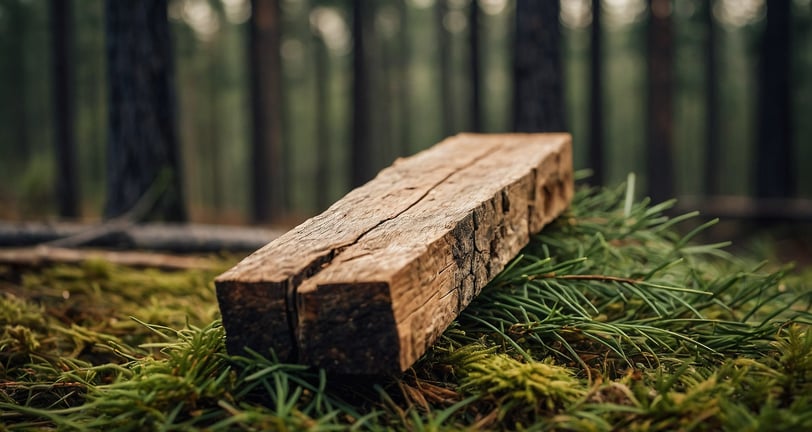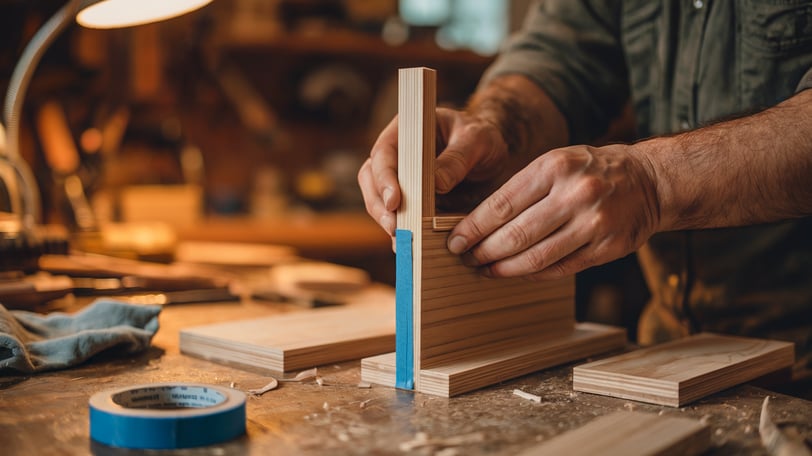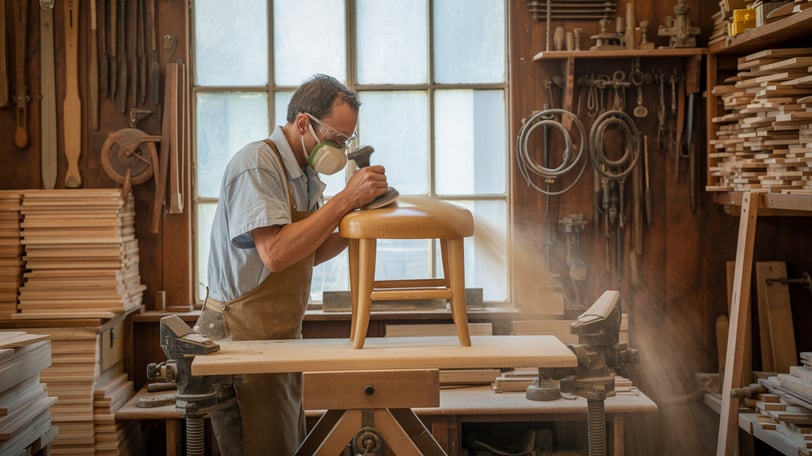Common Problems Woodworkers Face and How to Overcome Them
Discover smart woodworking storage ideas and solutions to common problems woodworkers face. Perfect for small spaces, DIY organizers, home storage ideas, storage room organization, and creative tips to improve your workspace and efficiency.


Woodworking is a rewarding craft that blends creativity with precision. However, it also comes with its own set of challenges. Whether you're a seasoned woodworker or just starting, encountering problems is part of the journey. I think that understanding these common issues can help you improve your skills, prevent mistakes, and enjoy the process even more.
In this post, I'll discuss some of the most common problems woodworkers face and provide tips on how to overcome them.
1. Wood Movement and Warping
One of the most frustrating issues woodworkers encounter is wood movement. Wood is a natural material that reacts to changes in humidity and temperature. As wood absorbs moisture, it expands, and as it loses moisture, it contracts. This can lead to warping, cupping, or twisting, which can ruin a project.
How to Overcome It:
Acclimatize Your Wood: Before starting a project, allow the wood to acclimatize to the environment where the finished piece will live. This can take anywhere from a few days to a couple of weeks, depending on the wood species and the environment.
Seal the Ends: To minimize uneven moisture absorption, seal the ends of the wood with paint or wax. This can help prevent cracking and splitting.
Use Kiln-Dried Wood: Whenever possible, use kiln-dried wood, as it has been dried to a stable moisture content and is less likely to warp.
2. Tear-Out and Chipping
Tear-out and chipping are common issues when working with wood, especially when planing, routing, or using power tools. These problems occur when the wood fibers are ripped out instead of being cleanly cut, leaving unsightly rough patches or chips.
How to Overcome It:
Use Sharp Blades: Always use sharp blades and bits when cutting or planing wood. Dull blades are more likely to cause tear-out.
Cut with the Grain: Whenever possible, cut with the grain rather than against it. Cutting against the grain increases the likelihood of tear-out.
Use Backing Boards: When cutting thin or delicate wood, use a backing board to support the wood fibers and prevent chipping.


3. Inaccurate Measurements and Cuts
Precision is key in woodworking, and inaccurate measurements or cuts can lead to gaps, misaligned joints, and wasted material. Even a small mistake can throw off the entire project.
How to Overcome It:
Double-Check Measurements: Always double-check your measurements before cutting. It’s easy to misread a tape measure or make a mistake when transferring measurements.
Use the Right Tools: Invest in quality measuring tools such as a good tape measure, combination square, and marking gauge. These tools will help you achieve more accurate measurements.
Practice Cutting Techniques: Practice makes perfect. Spend time practicing your cutting techniques, whether it’s using a table saw, miter saw, or hand saw, to improve your accuracy.
4. Glue Squeeze-Out
Glue squeeze-out is a common issue when assembling joints. While it may seem harmless, it can create problems during finishing, as the glue can prevent stain or finish from penetrating the wood, leaving blotchy areas.
How to Overcome It:
Use the Right Amount of Glue: Apply glue sparingly. It’s better to apply too little glue and add more if needed than to apply too much and have it squeeze out.
Use Painter’s Tape: Before gluing, apply painter’s tape along the edges of the joint. This will catch any excess glue and prevent it from getting on the wood surface.
Clean Up Immediately: If you do get glue squeeze-out, clean it up immediately with a damp cloth. Once the glue dries, it’s much harder to remove.


5. Tool Maintenance Issues
Proper tool maintenance is crucial for successful woodworking. Dull blades, rusty tools, or misaligned machinery can lead to poor cuts, inaccurate work, and even dangerous situations.
How to Overcome It:
Regular Sharpening: Keep your blades and bits sharp. Regularly sharpen or replace saw blades, planer knives, and router bits.
Clean and Lubricate: Keep your tools clean and free of dust and debris. Lubricate moving parts to prevent rust and ensure smooth operation.
Check Alignment: Periodically check the alignment of your tools, especially those with moving parts like table saws or jointers. Proper alignment ensures accurate cuts and reduces the risk of accidents.
6. Dust and Wood Shavings
Woodworking produces a significant amount of dust and wood shavings. Without proper management, this can create a messy and potentially hazardous work environment. Dust can affect your health, damage tools, and create fire hazards.
How to Overcome It:
Invest in Dust Collection: A good dust collection system is essential in any woodworking shop. It helps keep your workspace clean and reduces the risk of inhaling harmful dust particles.
Use Air Filtration: In addition to a dust collection system, consider using an air filtration system to remove fine dust particles from the air.
Wear a Dust Mask: Always wear a dust mask or respirator when working with wood, especially when sanding or cutting. This protects your lungs from harmful dust.
7. Finishing Problems
Finishing is often the most challenging part of woodworking. Common issues include blotchy stains, uneven finishes, and dust particles getting stuck in the finish. These problems can detract from the beauty of your project.
How to Overcome It:
Proper Surface Preparation: Before applying any finish, make sure the wood is properly sanded and cleaned. Any imperfections on the surface will be magnified by the finish.
Use a Pre-Stain Conditioner: For woods that tend to absorb stain unevenly, like pine or cherry, use a pre-stain conditioner to achieve a more even finish.
Apply Finishes in a Dust-Free Environment: Dust can easily get trapped in the finish, creating a rough texture. Apply finishes in a clean, dust-free environment, and allow each coat to dry fully before sanding and applying the next.
Woodworking is a craft that requires patience, precision, and a willingness to learn from mistakes. I truly believe that understanding the common problems woodworkers face and knowing how to overcome them, you can improve your skills and produce higher-quality work. Remember, each challenge is an opportunity to learn and grow as a woodworker. With practice and persistence, you'll be able to tackle any woodworking project with confidence.
